A visit to South Point at Ka Lae

South Point at Ka Lae: History, Culture, and Ocean Views Worth the Drive
Here’s a quick visit South Point at Ka Lae and attractions. It’s worth the effort to visit the southernmost tip of Hawaii Island. Use this quick guide to exploring the area and main attractions to visit below.
The South Point at Ka Lae on the Big Island is basically that, meaning ‘the point’ in Hawaiian and is the southernmost area of the island. The southern most tip of the island is a historic area that is one of the first places the Polynesians traveled through to the islands with some of the temples, heiau and historic places around the region.
The area of South Point in Hawaii is dramatic, rugged and fun to explore the outdoors in this wild coastline areas of Ka Lae, Hawaii.
South Point at Ka Lae: Uncover the Untamed Beauty on Hawaii’s Southernmost Tip

How to get to South Point, Hawaii
Drive down Hwy 11 from either Kona Town or Downtown Hilo area and between mile markers 69 and 70 is a sign directing to the South Point area.
Distance from Kona Town is approximately 60 miles (96 km) and takes about 1.5 to 2 hours by car, depending on traffic and road conditions.
Distance from Hilo is approximately 85 miles (137 km) and the drive typically takes around 2 to 2.5 hours. The routes from both cities involve scenic drives through the island’s diverse landscapes.
How to get to South Point, Hawaii Drive down Hwy 11
The two-lane road to South Point passes through farmlands, macadamia nut groves and beautiful pasture for around 12 miles until you reach South Point. You’ll notice the huge wind farms because of all the strong winds in the area. To the right, you’ll see the Komoa wind farms built in the 1980s but not operating anymore and rusting away slowly around the landscape.
Close by you’ll also see the newer Tawhiri Power GE turbines with 14 wind turbines in the area. The road turns more into a single lane gravel and dirt road that heads out to a fork at mile marker ten, that you can either drive to the Green sand beach at Papakolea and the Kaulana boat ramp or continue on to the South Point area. The right fork continues on to South Point at Ka Lae which is a short drive to the end with the parking lot facing the cliff area.
South Point aka Ka Lae on the Big Island of Hawaii

History of the South Point Area at Ka Lae, Hawaii
The entire area of South Point is in a National Historic Landmark with a variety of ancient heiau(temples), fishing shrines and other ancient relics.
South Point, or Ka Lae, on the southern tip of the Big Island of Hawai’i, is considered one of the most feasible first areas of settlement for Polynesians arriving in Hawai’i around 750 AD. This theory is based on both geographical and cultural factors that make it an ideal landing spot. South Point is the southernmost point of the Hawaiian Islands and is positioned directly in the path of prevailing trade winds and ocean currents, which would have facilitated navigation for the seafaring Polynesians. The coastline of South Point offers sheltered coves and accessible waters for landing canoes, making it a natural stop for early Polynesian voyagers.
Archaeological evidence suggests that the area was used for fishing and other resource gathering, indicating its suitability as a settlement. Ka Lae’s fertile lands and abundant marine life, especially near the nearby Kalalea Heiau (a fishing shrine), would have supported the early settlers. South Point’s strategic location also connects it to the island’s broader network of natural resources and ancient Hawaiian spiritual practices.
Archaeological Evidence
Excavations at South Point have uncovered one of the oldest known Hawaiian habitations, with artifacts dating back to approximately 750 AD. Notably, the Puʻu Aliʻi sand dune site yielded evidence of early human activity, including tools and remnants of structures. Additionally, the presence of ancient fishing shrines (heiau) and drilled holes in rock ledges suggests the establishment of fishing practices and settlement activities.
Today, the area remains a sacred and historical site, representing a critical point in the Polynesian migration to Hawai’i. The combination of favorable environmental conditions, abundant resources, and navigational advantages likely made South Point the first and most feasible entry point for the early Polynesian settlers around 750 AD.
Here’s a video exploration and history of Ka Lae at South Point below
Weather and best times to visit South Point area
The weather at South Point is characterized by a mild and pleasant tropical climate throughout the year. Summers, from June to September, bring warm temperatures with averages ranging from the mid-80s to low 90s Fahrenheit (around 29-35 degrees Celsius). Winters, from December to February, tend to be slightly cooler, with temperatures ranging from the mid-60s to low 70s Fahrenheit (around 18-23 degrees Celsius). It’s worth noting that South Point can experience stronger winds compared to other parts of the island, adding to the rugged charm of the area.
The best times to visit South Point largely depend on your preferences and the activities you wish to engage in. Generally, the shoulder seasons of spring (March to May) and fall (October to November) offer pleasant temperatures and relatively fewer crowds. During these times, you can explore the area without the peak tourist rush and enjoy a more tranquil experience.
It’s important to keep in mind that South Point can be subject to sporadic rain showers throughout the year. Packing a light rain jacket or umbrella is advisable to be prepared for unexpected rainfall. These rain showers often pass quickly and can add to the dramatic beauty of the landscape.
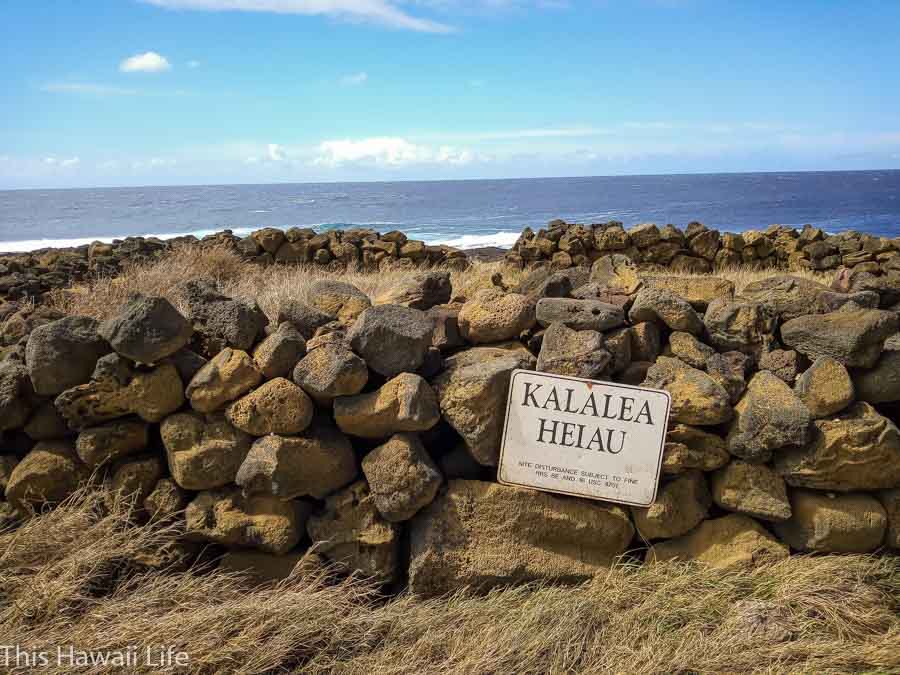
Top 9 Things to do around South Point at Ka Lae, Big Island
Around the southern tip of the Big Island in this mostly barren and pasture land, the rich history of the area is still present along with popular activities on the shoreline from fishing to jumping off the cliffs.

Top 9 things to do at South Point
1. Check out the cool blow holes next to the cliffs
There are two blow holes that are close to the cliff area and fun to walk around, but be careful since there are no barriers around the opening.
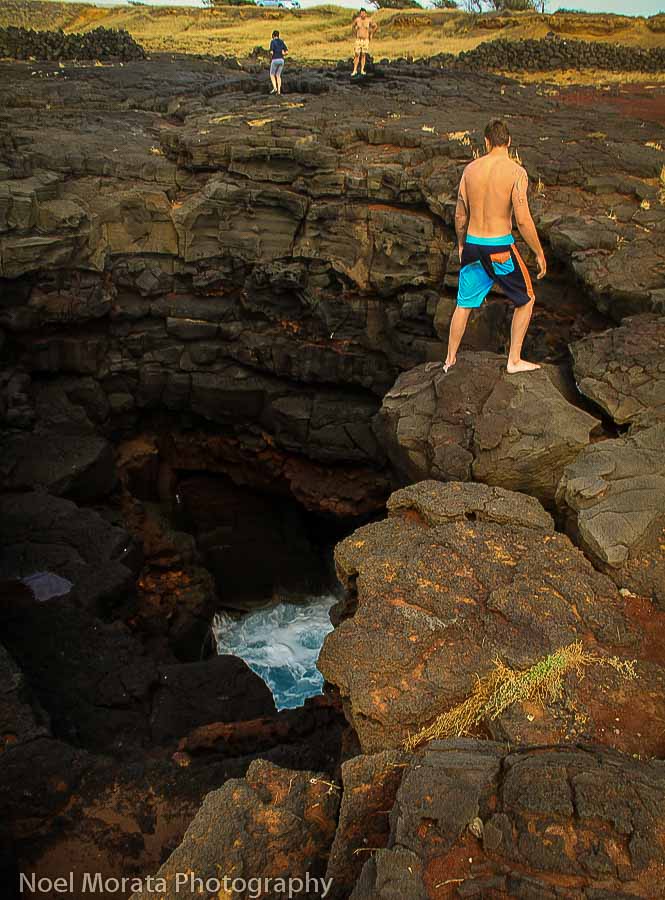
2. Check out the cliff divers jumping off Ka Lae
Crazy cliff divers, locals and tourists do occasionally jump from the top of the rocks to the cold ocean below and climb back up the stairs. This is dangerous and not recommended for people that don’t know the conditions, ocean currents and harm from jumping the cliffs into the ocean. It’s better to just watch locals and regulars do this and not risk this type of adventure.
Safety advisory to cliff jumping
Cliff jumping at South Point (Ka Lae) on Hawaiʻi Island offers a thrilling experience, but it comes with significant risks that require careful consideration. The jump is approximately 40 feet into waters about 20 feet deep, but conditions can vary, and the area is known for strong currents and unpredictable surf. Notably, the Halaea current, a powerful offshore flow, can make returning to shore challenging, even for strong swimmers.
Access to the jumping site involves navigating unpaved roads, and the area lacks facilities and immediate emergency services. Climbing back up after a jump can be difficult due to the steep, rocky terrain and the absence of maintained ladders.
Safety Recommendations:
- Assess Conditions: Only jump when the sea is calm, skies are clear, and water visibility is good.
- Local Insight: Consult with local residents or experienced individuals about current conditions and potential hazards.
- Jump Responsibly: Use designated jumping spots to avoid submerged rocks or shallow areas.
- Avoid Risky Behavior: Refrain from performing flips or stunts that increase the risk of injury.
- Buddy System: Never jump alone; having someone nearby can be crucial in emergencies.
- Proper Gear: Wear appropriate footwear to protect against sharp rocks and consider using flotation devices if you’re not a confident swimmer.
- Stay Hydrated: Bring sufficient water and sun protection, as the area offers little shade.
- Emergency Preparedness: Carry a first aid kit and have a means of communication, keeping in mind that cell service may be unreliable.
Remember, the thrill of cliff jumping should never come at the expense of safety. If conditions are not ideal or if you feel uncertain, it’s best to enjoy the view from the top and prioritize your well-being.
3. See what the local fishermen are catching
On weekends the entire coastline is buzzing with families and fishermen doing some long-haul casting below to catch some delicious fishes to cook later, It’s a popular pastime to enjoy some time in the area. Some will show you what they have caught in the area like Opelu, yellow fin tuna and some other local fishes in the area.

You’ll find local families spending the day to fish off the cliffs and enjoy the day here in South Point.
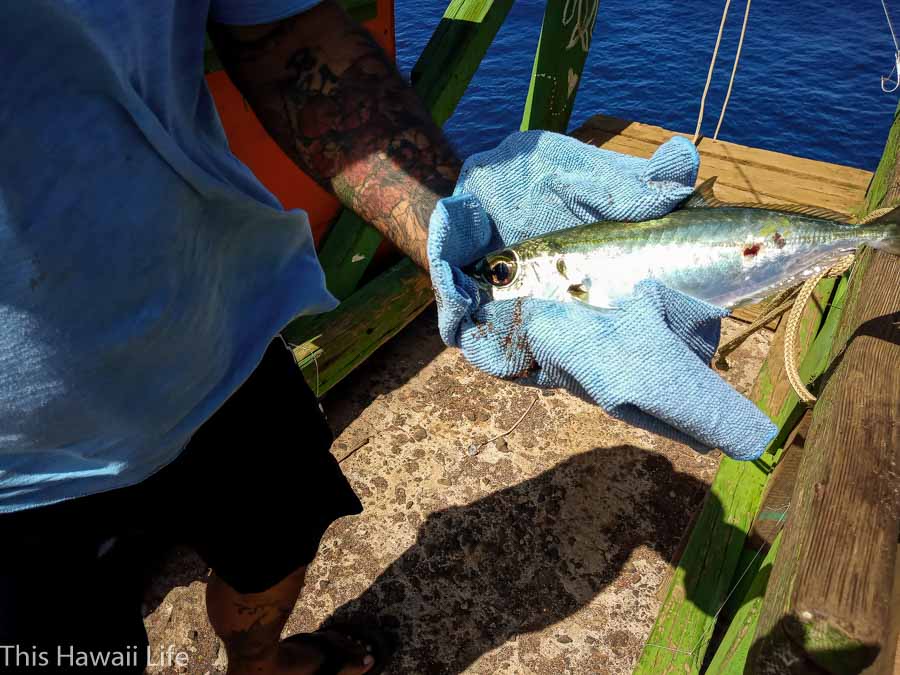


4. Explore around the large stone heiau called Kalalea
Kalalea Heiau is an ancient Hawaiian fishing shrine (koʻa) located at Ka Lae (South Point), the southernmost point of the United States on the Big Island of Hawaiʻi. This heiau was dedicated to Kū‘ula, the god of fishing, and is part of the South Point Complex, a National Historic Landmark District. The structure features stone walls forming a nearly perfect square, approximately 42 feet by 38 feet, with heights ranging from 4 to 6 feet. Adjacent to the west wall is a 20 by 20-foot platform paved with stones, believed to have been used for preparing fish for meals or sacrifices. Local fishermen still visit Kalalea Heiau to leave offerings, seeking blessings for a bountiful catch or to give thanks for a successful fishing season.
To visit Kalalea Heiau, travel south from Nā‘ālehu on Highway 11. Turn onto South Point Road and continue to the end, where you’ll find a parking area near the heiau. The site is open to the public, and visitors are encouraged to approach with respect, as it is a sacred place.
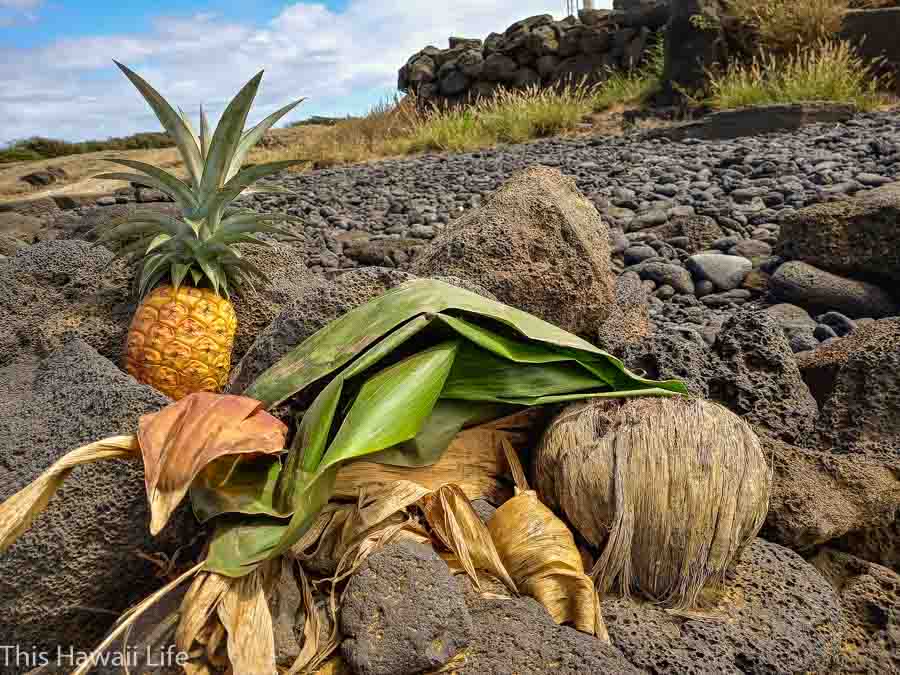
5. Check out the art along the various trails
There are a few rock and art pieces made by locals that are fun to check out and have thought provoking messages for those interested in finding out what these are here for and what they mean. It would be nice to see more placards or descriptions on these pieces, but you definitely are left to make your own interpretations of what the artists are trying to depict here.
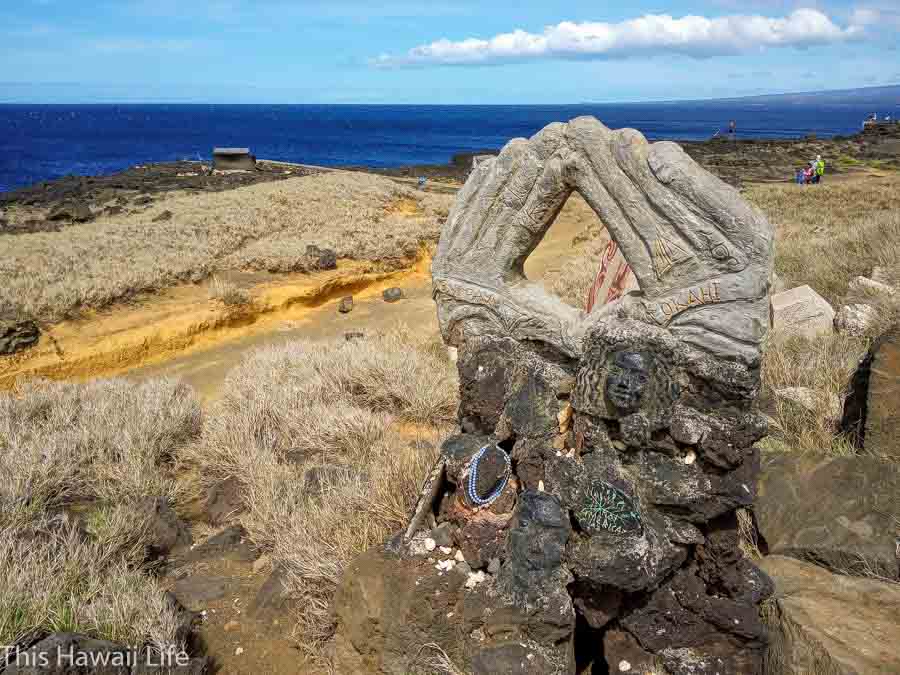
6. Hike along the cliffs towards the wind farms
There is a coastline trail skirting the cliffs from South Point towards the taller cliffs with the wind farms and this trail is gorgeous. Around .75 miles until you reach the no trespassing sign and fence cordoning off the pastureland. At this point you can walk back the coastal hike but stay at the distance from the ledge especially on windy days


7. Walk along the west side on the coastal trails
You can explore the rough trails going towards the boat ramp or to the Green Sand beach or Papakolea if you want to experience this lonely stretch of coastline and check out all the olivine drifts of sand around the coastal areas.
This area is windy and more rugged and you’ll find small swatches of olivine beach areas in between the sandy soils on the coastline.

The coastline towards the South Point boat ramp is exposed but with no cliff areas and areas of black, white and green sandy coves along with large boulders and smooth rocks shaped by the pounding surf.

8. Check out the olivine sand at the many sand drifts on the eastern side of South Point
This unique feature or crystal forms in the many areas where there are stretches of sand drives and little coves where you will spot a lot of the green olivine crystals against the dark black and white sands in the area.

9. Hike all the say to the Green sand beach at Papakolea
This is quite a hike if you are willing to do this all the way from Ka Lae. Or you can drive to the parking lot area closer to the start of the main coastal trails that lead to the green sand beach. If time is more limited then taking a casual cab ride on the back of local pick up truck drives is a fast and cheaper option of exploring the area.
Papakolea is the closest swimmable beach and is approximately a 5-mile hike a from the parking lot area of before South Point.
Check out our post on exploring the Green Sand Beach here for more information.
Details to visiting South Point at Ka Lae
When you are parking, make sure to leave no valuables or anything in the car in view that can be broken into.
Although there are a lot of visitors that do jump from the cliffs and into the ocean, this is dangerous and landing in the ocean is always unpredictable along with climbing back up the cliffs.
The currents around South Point are strong and the only landmass south of the Big Island is Antarctica which is a long way off. The currents have a name known as the “Halaea Current” and will sweep any
Daredevils diving the cliffs straight out to sea.
There is a metal light beacon on the left of the hoists that denote the actual southern most point of the island and work a walk through the cliff areas.
There is a rock wall close to the beacon that designates the Kalalea Heiau and is a spiritual spot and should be treated with respect so do not climb or sit on the fragile rocks and sacred site.

More inside tips to visiting South Point at Ka lae
Visiting South Point at Ka Lae is a unique experience, offering a blend of natural beauty and Hawaiian history. Here are some inside tips to enhance your visit:
Historical Significance: South Point is not only known for its stunning landscapes but also for its historical importance. Take some time to learn about the ancient Hawaiian fishing village that once thrived here and the significance of Ka Lae in Hawaiian culture.
Cliff Jumping: While it’s an adventurous activity, cliff jumping is popular at South Point. If you’re an experienced cliff jumper and conditions are safe, you can take the plunge into the clear waters below. Always exercise caution and be aware of ocean conditions.
Green Sand Beach: A short hike from South Point, you’ll find Papakolea Beach, one of the world’s few green sand beaches. The unique olivine crystals in the sand give it its distinctive color. Be prepared for a rugged hike and bring plenty of water.
Bring Supplies: South Point is a remote area with limited facilities, so it’s wise to bring your own supplies, including water, snacks, and any necessary beach gear. There are no restaurants or stores nearby.
Wind Farm: Nearby, you’ll see a wind farm with large turbines. It’s an interesting sight and a reminder of Hawaii’s efforts to embrace renewable energy.
Fishing: If you enjoy fishing, consider trying your luck at South Point. It’s a popular spot for local anglers, and you might catch a variety of fish, including ulua (giant trevally).
Sturdy Footwear: Wear sturdy shoes, as the terrain can be rocky and uneven. Comfortable walking or hiking shoes will help you explore safely.
Lighthouse: While you can’t enter the lighthouse, you can admire it from the outside. It’s a historic structure and an iconic part of the landscape.
Respect the Environment: Remember to respect the natural beauty of South Point. Leave no trace, and be mindful of the fragile ecosystem and wildlife in the area.
Wind and Sun Protection: South Point is windy, and the sun can be intense. Bring sunscreen, a hat, and sunglasses to protect yourself from the elements.
Visiting South Point at Ka Lae is a rewarding adventure that allows you to connect with Hawaii’s natural and cultural heritage. By being prepared and respectful of the environment, you can make the most of your journey to this remote and captivating destination on the Big Island.
Here’s some video views from above of Ka Lae Southpoint to enjoy below
Other places to explore around South Point and Kau district
If you are planning to visit more attractions in the Kau district and southern part of the island, check out these other worthwhile places to visit below
Check out the Naalehu town area for small town vibe, food and conveniences
Visit the Black sand beach at Punalu’u
Lava eruptions at Volcanoes National Park
Explore and visit Volcano Village close to the national park
Visiting Papakolea beach at South Point Area
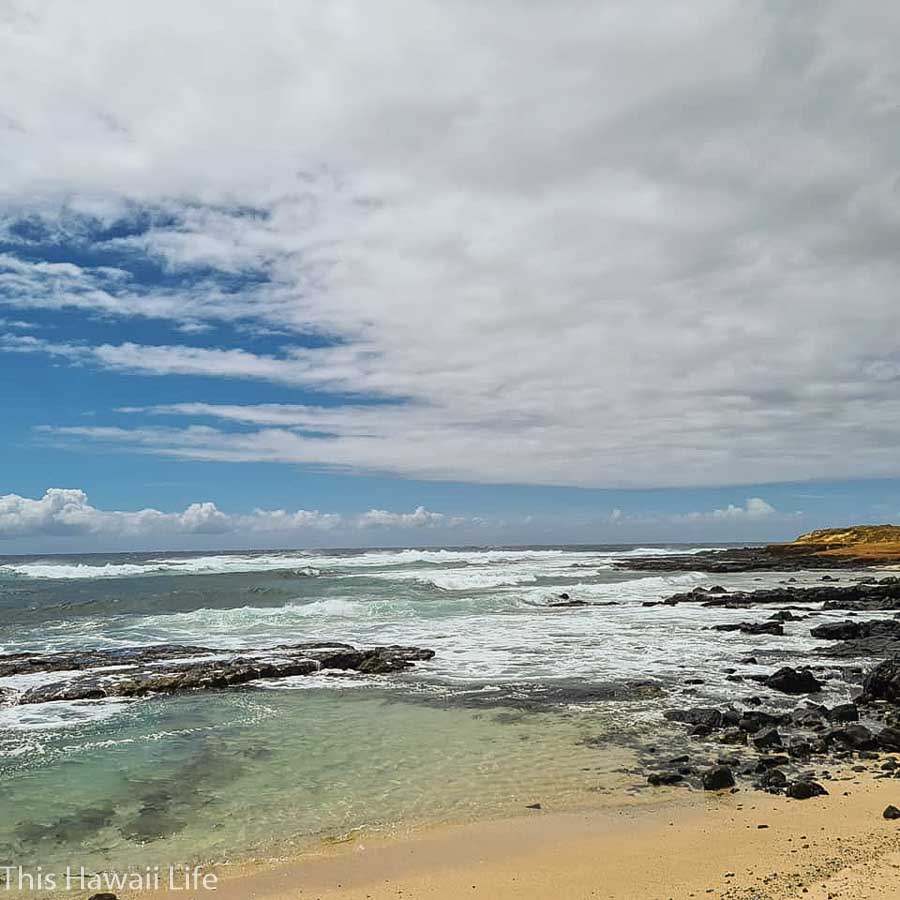
Conclusion to visiting South Point at Ka Lae
A visit to South Point at Ka Lae is a remarkable journey into the untamed beauty of Hawaii’s southernmost tip. With its rugged cliffs, breathtaking vistas, and the famous Green Sand Beach, this extraordinary destination offers an unforgettable experience for adventurous souls and nature enthusiasts alike.
Whether you’re marveling at the crashing waves against the cliffs, taking in the panoramic views of the vast Pacific Ocean, or exploring the unique geological formations, South Point captivates with its raw and untouched allure. The area’s mild tropical climate ensures comfortable conditions throughout the year, allowing you to immerse yourself in the surroundings and appreciate the rugged charm of this remote location.
To make the most of your visit, consider exploring South Point during the shoulder seasons when the weather is pleasant, and the crowds are fewer. This allows you to fully embrace the serenity of the area and have a more intimate experience with the stunning landscapes.
Thanks for checking out this post on visiting South Point at Ka Lae. Hope the post was informative and a must read article – if so please do share it with any of the social media buttons around the page.
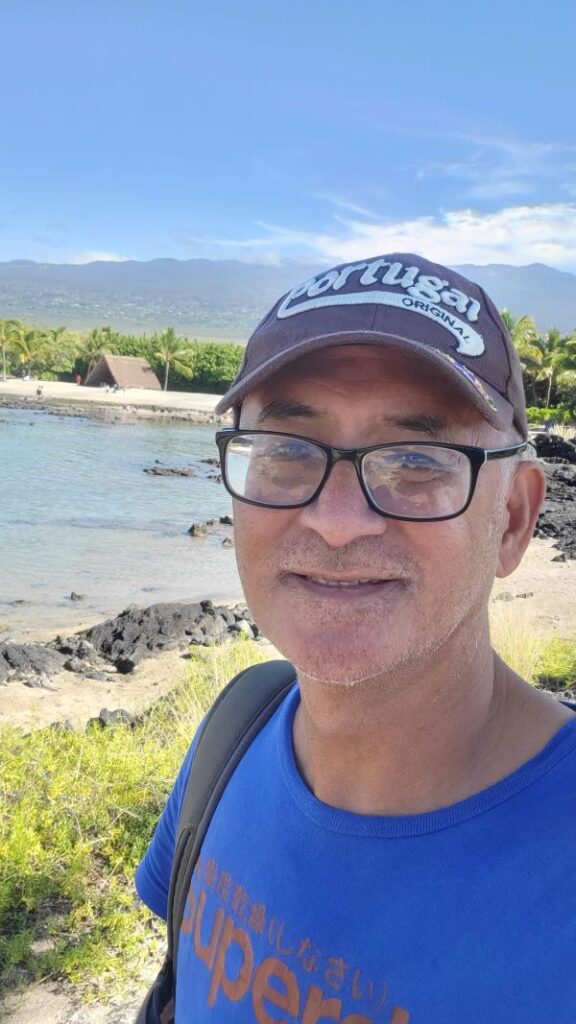
Author Bio – Noel Morata
Having lived in Hawaii for over 15 years, I’ve explore all the historic and cultural sites, tried delicious traditional food, fusion and local style dishes and learned a lot about growing and sustainability.
Hawaii for me is ever changing and I visit many of these places regularly for inspiration, changes that may occur, seasonality and cultural practises. I hope to share with you all the fascinating things and places I’ve learned grown appreciation for and hope that you will find the information helpful to visiting the islands.
When I have visitors to Hawaii, I take them to see the Southern tip at Ka Lae and visit the main sites and things to do here. Remote, scenic with amazing viewpoints, it’s a great place to visit and we share all the top things to do here.


0 Comments
Trackbacks/Pingbacks